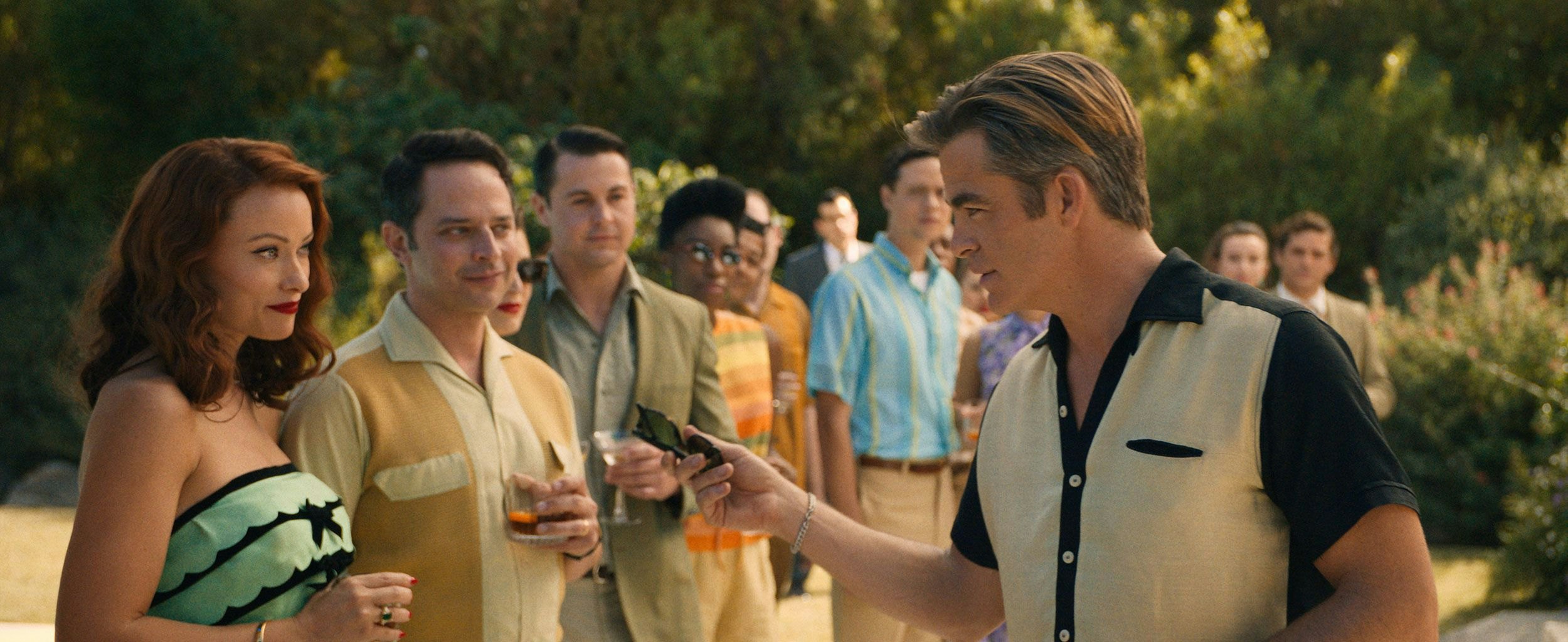
Earlier this fall, the movie Don’t Worry Darling made headlines amidst controversy over backstage disputes between cast members.
But as it turns out, the film’s sci-fi plot twist may prove more controversial than the offscreen drama in the long run. Spoilers ahead for Don’t Worry Darling.
Don’t Worry Darling seems like a simple tale about a 1950s suburban paradise, featuring housewife Alice and her husband Jack, who works for a mysterious defense program known as “the Victory project.”
But Alice suspects the Victory Project's enigmatic leader, Frank, may be hiding something serious. Two-thirds of the way through the movie, it becomes clear that Alice’s suspicions are right. Her entire suburban existence in the company town of Victory, California, is an intricate lie, concocted by an extensive virtual reality scheme, which wiped her memories of her real world.
In real life, Alice is a doctor who works long, grueling hours, much to the chagrin of her husband, Jack. Meanwhile, Jack is actually Alice’s unemployed husband, who has been indoctrinated into misogynistic men’s rights ideology after listening to speeches from Frank— a fictionalized version of the controversial psychologist Jordan Peterson.
Jack, along with the other Victory Project husbands, has drugged his wife and placed her into a hyper-realistic virtual reality simulation. He claims it's for her benefit, as he thinks she was miserable working so much — an assumption Alice vehemently denies upon learning the truth.
Many reviews focused on the feminist themes in the movie’s shocking plot twist, but what we want to know: is Don’t Worry Darling’s premise actually plausible? Could we all soon become trapped in a hyper-realistic virtual reality version of the Metaverse?
Elizabeth Kensinger, a professor of psychology at Boston College who studies memory retrieval, tells Inverse that “it is conceivable that there could be technology that could enable the brain to create whole worlds.”
Reel Science is an Inverse series that reveals the real (and fake) science behind your favorite movies and TV.
Is the Metaverse possible?

Tech leaders like Mark Zuckerberg have proposed that the future of social media will be through the Metaverse — virtual reality simulations where you can interact with others in computer-generated programs.
But could someone create a computer simulation with sensory experiences so realistic that it tricks our brains into believing the fake world is real? Maybe, some experts say.
“...our perception of the world is just a creation by our brains.”
Kensinger says that Don’t Worry Darling’s premise taps into a very human problem: distinguishing imagined memories and lived experiences. If you’ve ever believed that you locked your door only to come home and find it unlocked, then you probably understand this concept.
“Reality monitoring is hard because there is a lot of similarity between how the brain perceives the actual world and how the brain imagines mentally-created worlds,” Kensinger says.
She adds, “while it's eerie to think about it this way, our perception of the world is just a creation by our brains.”
We typically use clues to tell us what is plausible and what is not — for example, you know you were only daydreaming and not actually on a tropical beach vacation this morning because you’re sitting in your cubicle eating lunch. But if you take away those plausible cues, then Kensinger says it’s possible we could confuse the real world — the one in which we act — and the virtual world.
“It is conceivable that future technology could allow someone to enter a dream-like state to navigate an alternate reality that they would experience as if it were real,” Kensinger concludes.
Futurist Andrew Curry says that living permanently in the Metaverse would be challenging due to the body’s metabolic needs, though in Don’t Worry Darling, it’s implied Jack takes care of Alice’s biological needs like feeding. Curry says it would take a highly stimulating experience to make people want to hook themselves up to the film’s virtual reality since we would retain some awareness of our true selves even in virtual reality.
“You’d have to suppress their physical experience of the world, or make the virtual reality experience so compelling — the digital version of psilocybin, perhaps — that they just went along with it for the ride,” Curry says.
But Gualtiero Piccinini, associate director of the Center for Neurodynamics at the University of Missouri-St. Louis, tells Inverse he is skeptical for several reasons. For example, while the characters in Dont’ Worry Darling experience pain and eat and smell just like we do in the real world, Piccinini says “neither tastes nor odors can be simulated using ordinary computer simulations.”
“I don’t see how we can achieve a hyper-reality indistinguishable from the real world,” Piccinini adds.
Could you wipe someone’s memories and trap them in the Metaverse?

The movie’s plot only works because Jack traps Alice in the simulated reality, and the computer program effectively wipes her real memories while she’s in the simulation.
“Amnesia is a real thing, and there are recent experimental methods that have succeeded at implanting and erasing simple memories in rats,” Piccinini says.
But other experts don’t think this movie’s scheme is as realistic
“I think we're a long way away from being able to wipe people's memories,” Kensinger says.
That being said, Kensinger says the mind can resurface long-forgotten details from the back of our mind — like childhood acquaintances — to the forefront. Similarly, it’s not implausible for an alternate reality to become so front-of-mind that your brain temporarily believes it to be real.
“I think it's common that we focus on what is in front of us and don't think about other things that we know to be true,” Kensinger explains.
Peter Curry — who is also Andrew’s son — is a recent Master’s graduate in neuroscience at London University’s Birbeck College. He tells Inverse that “people can have incidents where they lose their entire narrative memory structures, so the idea that memory can't be replaced is not entirely true,” though it’s debatable to what extent memory wiping is possible.
Ultimately, Peter Curry says that “people probably could fall into the Metaverse.” In effect, what Frank has done in Don’t Worry Darling is to create an illusion that tricks the brain’s mechanisms for inference — the process of making guesses about the world using evidence and reasoning. But he says it would be hard to sustain this illusion forever, as the movie shows when Alice begins to suspect something is wrong with the town of Victory.
“In short, we currently lack sufficient technology to fool the brain’s high-level inference mechanisms over long periods of time,” Peter Curry says.
What’s the difference between our “fake” lives and our real ones?

Don’t Worry Darling blurs the line between fiction and reality. At the end of the movie, Alice regains memories of her real life, and immediately rejects her fictional housewife life. But her friend, Bunny, takes an alternate approach.
Unlike the other wives, Bunny has always known that her existence in suburban Victory isn’t technically real, but she makes herself believe it is — because a virtual reality with her fictional children is better than a real world in which they’re dead.
As Bunny tells Alice: “They’re real to me, Alice, because, here, my kids are alive.”
“Our identity, the way we interact with others, and the decisions we make every day are affected by what we remember to be true about our past, whether or not those memories are accurate,” Kensinger says.
As the Metaverse becomes less of a hypothetical and more of reality, it’s possible to worry about the blurring of our fictional VR personas and our memories of the real world. How can we tell what’s fake and what’s real?
Piccinini argues that if you can truly develop yourself in simulated reality, despite the current limitations of virtual reality, “then that is the one and only self you have.”
It’s a chilling idea that Don’t Worry Darling effectively drills home.
Don’t Worry Darling is streaming now on HBO Max.
!["[T]he First and Fifth Amendments Require ICE to Provide Information About the Whereabouts of a Detained Person"](https://images.inkl.com/s3/publisher/cover/212/reason-cover.png?w=600)






